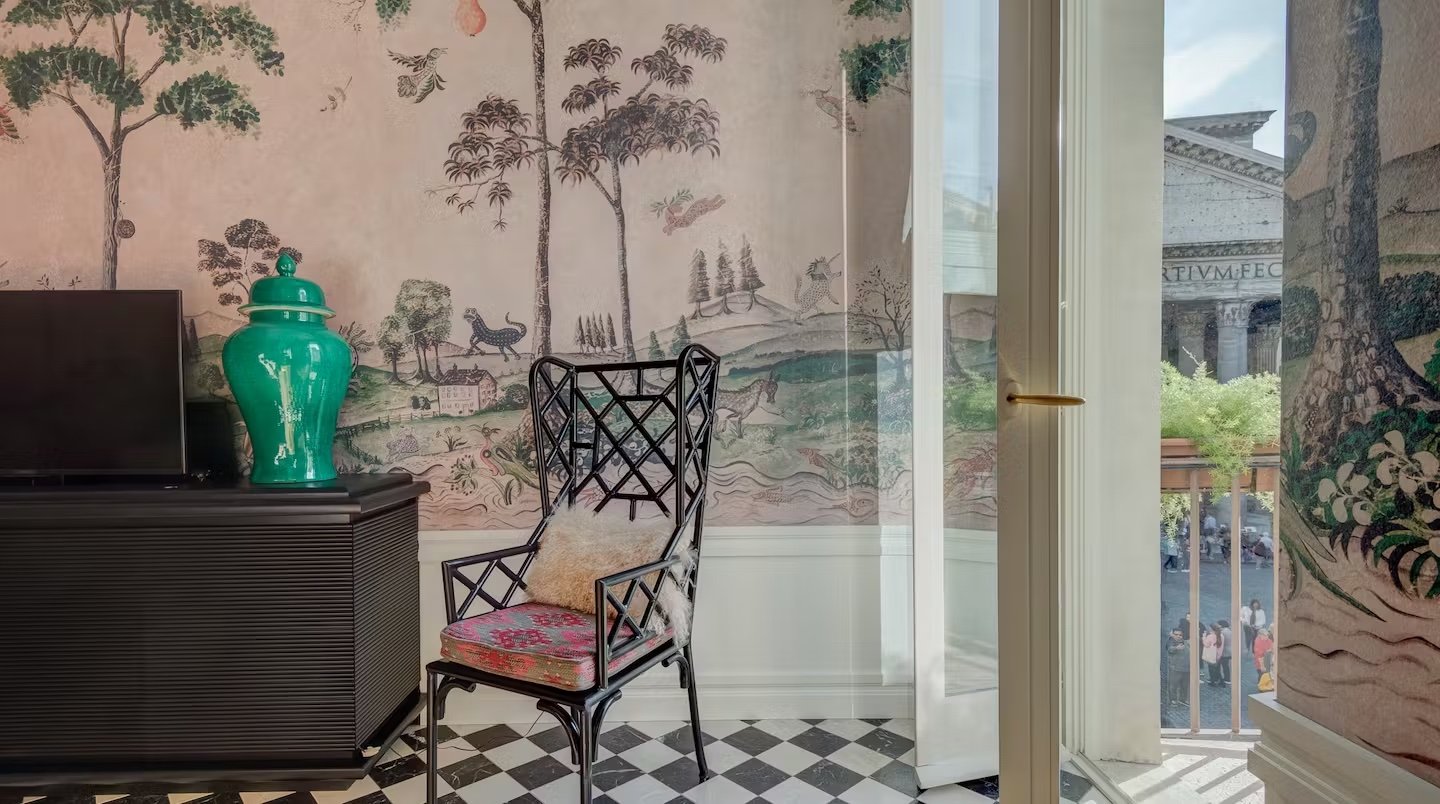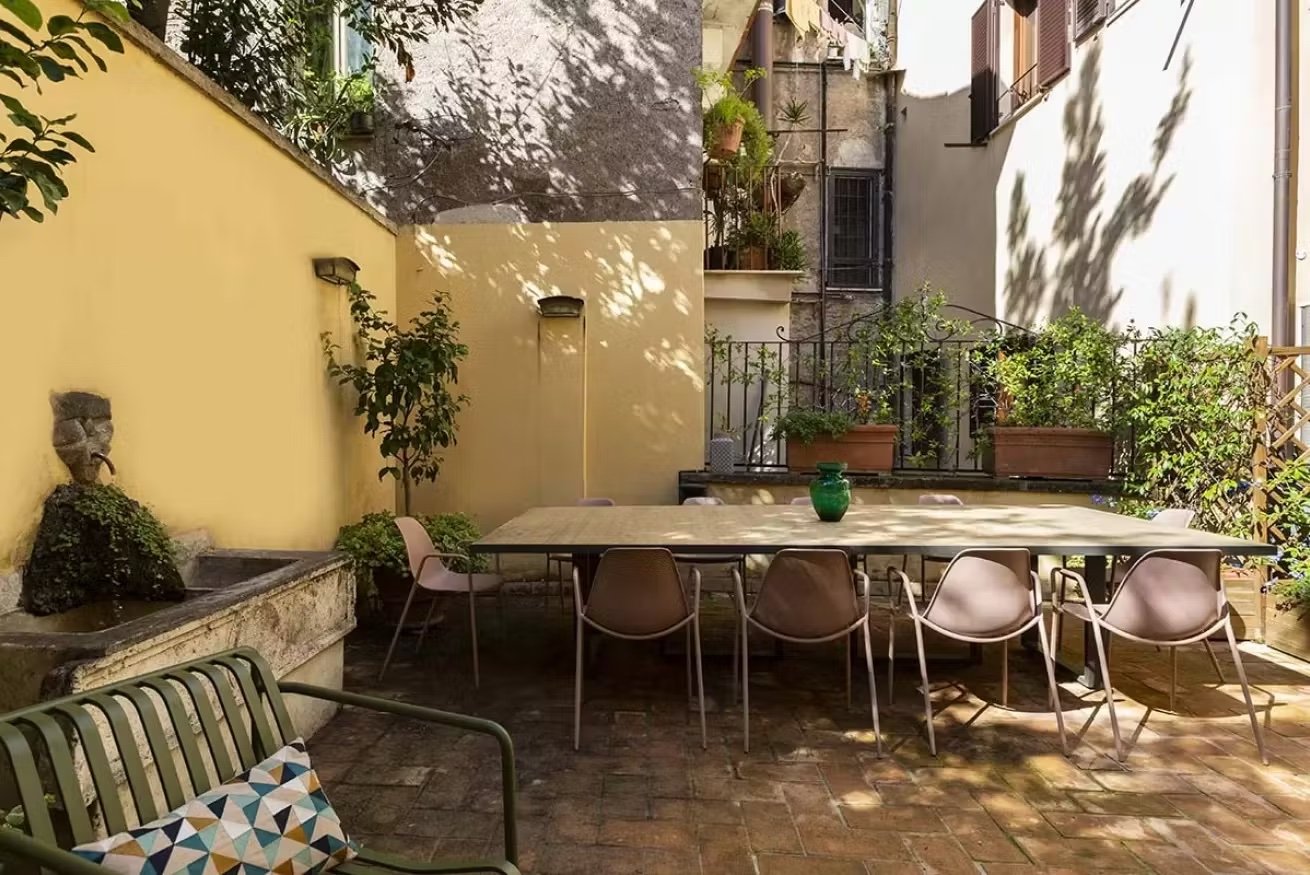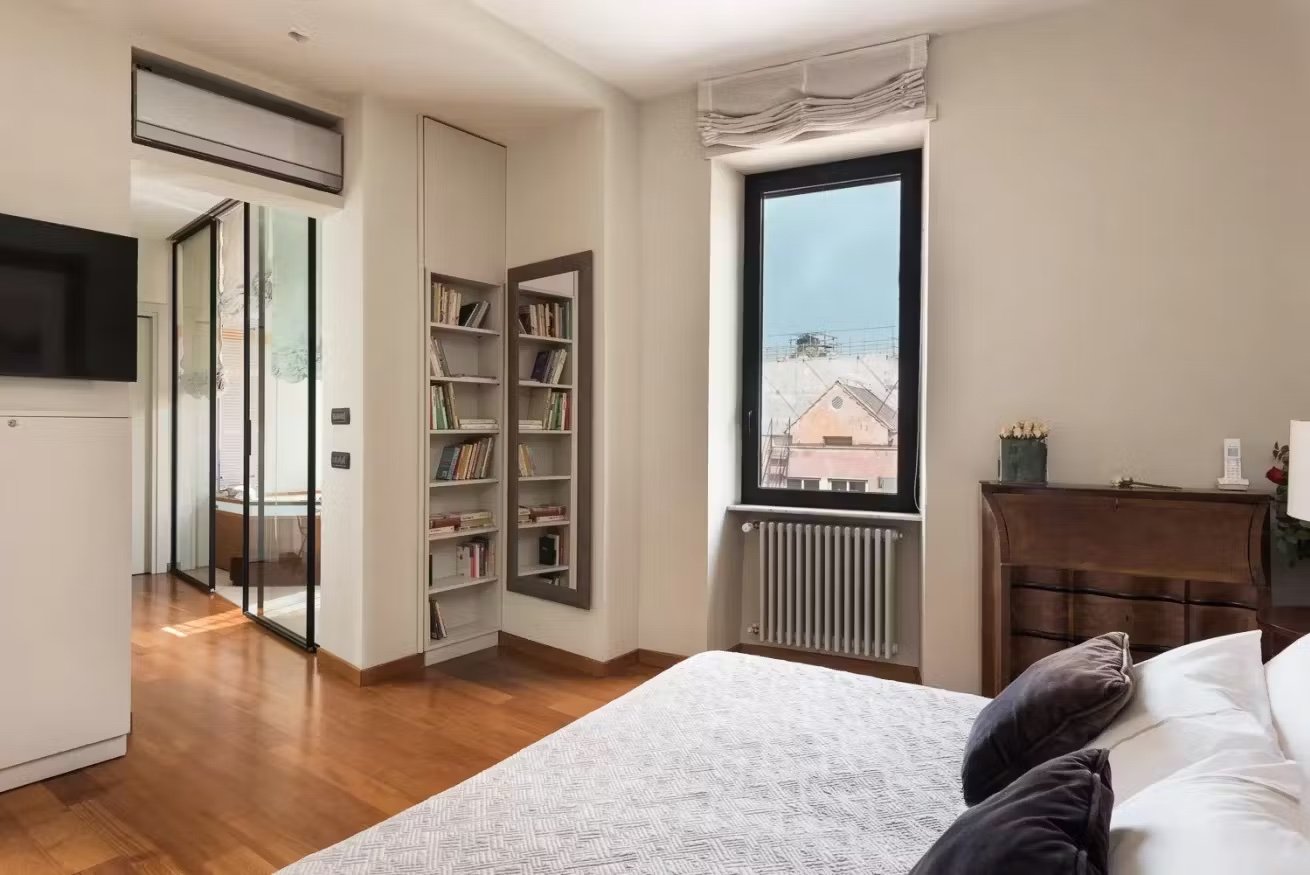Sibley’s Guide to Rome
“Only in Rome is it possible to understand Rome.”
-Johann Wolfgang von Goethe
Vatican Museums
Getting There
First things first, you’ll need a flight. If you’re able, I recommend reverse booking. This travel hack can save you a TON of money. Hop on Skyscanner and enter your home airport and Rome in the search bar. When you click on the dates choose “flexible dates”. Click through each month and see when the cheapest time to travel to Rome is, then you can book the cheapest ticket and plan your trip around those dates! Rome has a mild Mediterranean climate and therefore it is lovely to visit almost any time of the year! This makes Rome a great destination to utilize reverse booking.
Most likely if you are flying to Rome you will land at the Leonardo da Vinci-Fiumicino Airport. From the airport it is uncomplicated to get to the city center. The Leonardo Express is a very convenient train that takes you directly from the airport to Termini Station in Rome’s city center. Tickets are €14 per person and there is also a group discount if you are traveling with four or more people in your party (four tickets for €40). The journey takes 32 minutes and leaves every 15 minutes. I definitely recommend taking advantage of this great public transit option. If you prefer to take a taxi you can expect to pay around €50 or more. This price can go up depending on where in Rome’s city center you would like to go and what time of day you will be traveling.
Where to Stay
I am partial to home-stays like airbnb and VRBO. I prefer the homey feel of an apartment to a (sometimes bland and uninspiring) hotel. Plum Guide takes the best properties listed on home-stay rental sites and lists only the top 2% on their website; thus ensuring you get the best home-stay experience possible. Below I’ll link the most swoon-worthy properties in Rome!
Trastevere
Sleeps: 4 guests
1 Bedroom, 1 Bathroom
Neighborhood: Ponte, Santuario di San Salvatore in Lauro
“Vista Antica”
Sleeps: 8 people
2 bedroom, 2 bathroom
Neighborhood: Monti, Roman Forum
“L’Anfiteatro”
Sleeps: 8 guests
4 bedroom, 3 bathroom
Neighborhood: Monti, Colosseum & Roman Forum
For Groups
“Divino Amores”
Sleeps: 10 guests
5 bedrooms, 5.5 bathrooms
Neighborhood: Pantheon
“Colosseo Abode”
Sleeps: 8 guests
4 bedroom, 2 bathroom
Neighborhood: Monti
“The Cool of Rome”
Sleeps: 16 guests
8 bedroom, 8 bathroom
Neighborhood: Jewish Quarter
“Key to the Eternal City”
Sleeps: 10 guests
3 bedroom, 4 bathroom
Neighborhood: Borgo
Outdoor Space
“Frieze Frame”
Sleeps: 5 guests
2 bedroom, 2 bathroom
Neighborhood: Pincio & Villa Borghese
“The Sandro”
Sleeps: 4 guests
1 bedroom, 1 bathroom
Neighborhood: Monti
“Zebras and Palms”
What to See
Iconic Rome
St. Peter’s Square
Vatican Museums & Sistine Chapel
The Vatican Museums, located within Vatican City, are a treasure trove of art and history, housing one of the most extensive and valuable collections in the world. These museums feature an impressive array of masterpieces, including works by Michelangelo, Raphael, and Leonardo da Vinci, along with an extensive collection of ancient Roman, Egyptian, and Etruscan artifacts, and more! Check out the official website to plan ahead what you'd like to see as there are more than 20 museums! I recommend buying tickets in advance at the official website. Lines can get extremely long but you can forego the wait by buying a timed ticket! I recommend getting there early so you can go straight to the Sistine Chapel (it is a long walk) which opens at 9am, one hour later than first entry to the museum.
Colosseum & Roman Forum
One of the world's most famous landmarks, the Colosseum stands as a symbol of Rome's rich history. This colossal amphitheater, completed in 80 AD, once hosted grand gladiatorial contests and other public spectacles, accommodating tens of thousands of spectators. Below I've linked the official website where you can book your tickets in advance to avoid waiting in line all day!
St Peter’s Basilica
St. Peter's Basilica, located in Vatican City, is one of the most iconic and revered religious monuments in the world. Its awe-inspiring Renaissance architecture, designed by renowned architects like Michelangelo and Gian Lorenzo Bernini, features a colossal dome and a stunning interior adorned with intricate mosaics, sculptures, and religious artwork. Also check out the gift shop to mail a postcard from Vatican City!!! Get there early, since the basilica is free to visit the line can get very long very early. I recommend getting to St Peter’s when it opens at 7am and going straight from there to the Vatican Museums right after, then head back to St. Peter’s if you’ve booked a timed tour of the dome or necropolis.
Dome Tour
You can hike up to the top of the dome for fantastic views over all of Rome! Buy tickets in advance at the link below.
Vatican Necropolis
Access is limited and guided tours are required, available from Monday to Saturday, with a fee of approximately €13 per person. As you navigate the intricate burial chambers and view ancient tombs, including what is believed to be the tomb of St. Peter, you’ll be immersed in a profound historical and spiritual experience. Due to high demand, it’s advisable to book your tour in advance to ensure your visit to this remarkable site.
Castel Sant’Angelo
Castel Sant’Angelo View of St. Peter’s
Castel Sant'Angelo, also known as the Mausoleum of Hadrian, is an iconic fortress and museum in Rome, Italy. Originally built as a mausoleum for Emperor Hadrian and his family in the 2nd century, it later served as a papal residence and a defensive structure. Today, it stands as a historic and imposing landmark, offering panoramic views of the city from its ramparts and housing a museum that displays a rich collection of art, artifacts, and historical memorabilia. Check out the cafe at the very top for awesome views over the city!
Ponte Vittorio Emanuele II
Ponte Vittorio Emanuele II is an elegant bridge that spans the Tiber River, connecting the historic center of Rome with the Vatican City. While the bridge is always open and free to cross, it's a perfect spot for picturesque views of St. Peter's Basilica and the surrounding landscape. Stroll across to appreciate its beautiful sculptures and ornate design, especially at sunset when the city is bathed in golden light. This charming bridge is not only a functional crossing but also a lovely vantage point for photographers and romantics alike.
Spanish Steps
The Spanish Steps, a stunning monumental stairway of 135 steps, connect the Piazza di Spagna with the Trinità dei Monti church, making it a popular gathering spot in Rome. Open year-round and free to visit, the steps are a perfect place to relax, enjoy a gelato, or people-watch while taking in the vibrant atmosphere of the surrounding area. Early morning or late evening visits offer a quieter experience, allowing you to fully appreciate the beauty of the steps and the nearby historic buildings. Don't miss the chance to snap a photo of the iconic fountain, Fontana della Barcaccia, at the base of the steps! Remember that sitting on the steps is NOT allowed and if you are caught then you can face a ticket and a fine!
Trinità dei Monti
The church is open to visitors daily, typically from 7:30 AM to 7 PM, and entrance is free. Climb to the church to enjoy stunning views of Rome and the bustling Piazza di Spagna below. Don’t miss the chance to explore the tranquil gardens nearby, which add to the charm of this picturesque location. To avoid climbing up the steep stairs to the church, go around the “back” of the stairs by walking up Via Sistina.
Trevi Fountain
The Trevi Fountain is one of Rome's most iconic landmarks, celebrated for its breathtaking Baroque architecture and the tradition of tossing a coin to ensure your return to the Eternal City. Open year-round and free to visit, the fountain is particularly enchanting in the early morning or late evening. If you love fountains but don’t love crowds check out my map of 15 beautiful fountains in Rome that often go overlooked!
Vicus Caprarius-the Water City
Vicus Caprarius, also known as the Water City, is an intriguing archaeological site in Rome that reveals the remains of a vast network of ancient aqueducts and waterworks beneath the bustling city, where you can see the water that feeds the Trevi Fountain. Open to the public Tuesday through Sunday, with entrance fees around €5, this hidden gem provides a fascinating glimpse into the engineering marvels of ancient Rome. As you explore the winding passageways and well-preserved structures, you’ll gain insight into how the city’s water supply was managed and distributed. Don't miss the chance to experience this unique blend of history and archaeology away from the usual tourist crowds.
Piazza Navona
Piazza Navona is characterized by its elongated oval shape, as the square was once a site to watch chariot racing, with three ornate fountains as its focal points. The square is a delightful spot to soak in the vibrant atmosphere of Rome.
Fiumi Fountain
Fiumi Fountain, also known as the Fountain of the Four Rivers, is a stunning Baroque masterpiece located in Piazza Navona, showcasing an impressive central obelisk surrounded by Bernini’s sculptures representing the four major rivers of the four continents where Christianity had spread.
Off the Beaten Path
San Clemente Basilica
San Clemente Basilica
San Clemente Basilica showcases a remarkable layered history with its 12th-century church built over a 4th-century basilica and ancient Roman ruins below. Open daily from 9 AM to 12:30 PM and 3 PM to 6 PM (with extended hours on weekends), the entrance fee is around €10 to the underground sites, the main church is free. Don’t miss the chance to explore this unique architectural journey through time, one of my favorites in Rome!
go behind the museums for great views of the Roman Forum
Capitoline Museum & Capidoglio Square
The Capitoline Museum in Rome, home to a stunning collection of classical art and ancient artifacts, is a must-visit for history enthusiasts. Open daily from 9:30 AM to 7:30 PM, the museum offers an array of masterpieces, including the iconic Capitoline Wolf and the Dying Gaul. Entrance fees are approximately €15 for adults, with reduced rates available for students and seniors.
Insula Romana
Insula Romana is the remains of a typical Roman apartment building, offering insights into the daily life of ancient Romans. Open to the public on weekends, with an entrance fee of around €5, this site allows visitors to explore well-preserved rooms and corridors that reveal the layout of urban living in ancient times. As you wander through the ruins, you'll gain a unique perspective on the social and architectural innovations of the era. It's a fascinating stop for anyone interested in Rome's rich history beyond the major tourist attractions.
Santa Maria della Concezione dei Cappuccini
Santa Maria della Concezione dei Cappuccini is known for its striking Capuchin Crypt, decorated with the bones of over 4,000 monks arranged in intricate displays. The church is open daily from 9 AM to 7 PM, with the crypt accessible until 6:30 PM; entrance fees are around €8. A visit here offers a thought-provoking glimpse into the Capuchin order’s unique approach to mortality and art. Disclaimer: If you don’t like the sight of bones or mummies, this is not for you.
Basilica of Santa Maria in Trastevere
The Basilica of Santa Maria in Trastevere, one of Rome's oldest churches, is celebrated for its stunning mosaics and charming piazza. It is open daily from 7:30 AM to 1 PM and 4 PM to 8 PM, and entrance is free, making it an ideal spot for both quiet reflection and exploration. Don't miss the chance to admire the vibrant golden mosaics that depict biblical scenes, offering a glimpse into the artistry of the past.
Villa Farnesina
Villa Farnesina, a stunning Renaissance villa in Rome, is famous for its exquisite frescoes by artists like Raphael. Open Tuesday to Sunday from 9 AM to 2 PM, with an entrance fee of around €10, the villa provides a serene escape filled with art and beautiful gardens. Be sure to explore the charming rooms and vibrant artworks that capture the essence of the Italian Renaissance.
Palazzo Doria Pamphilj
Palazzo Doria Pamphilj is a magnificent private palace in Rome, showcasing an impressive collection of art, including masterpieces by Caravaggio and Velázquez. Open daily from 9 AM to 7 PM, with an entrance fee of around €12, the palace invites visitors to explore its opulent rooms and stunning gallery. Don't miss the chance to wander through the beautiful gardens and soak in the rich history of this exquisite residence.
Tiber Island
Basilica di San Bartolomeo all'Isola & Tiber Island
Basilica di San Bartolomeo all'Isola, located on Tiber Island, is a serene sanctuary dedicated to Saint Bartholomew and features stunning Romanesque architecture and captivating artworks. The basilica is open daily from 7:30 AM to 1 PM and 4 PM to 7 PM, with free entrance for all visitors. While you're on Tiber Island, take a leisurely stroll along its charming paths, enjoying picturesque views of the Tiber River and the vibrant atmosphere of this historic area.
Galleria Borghese
Galleria Borghese is a must-visit art museum nestled in the lush Borghese Gardens, showcasing an incredible collection of masterpieces by artists such as Caravaggio, Raphael, and Bernini. The gallery is open from 9 AM to 7 PM, but advance reservations are required due to limited entry; tickets are around €15. As you explore the elegant rooms, you'll be captivated by the stunning sculptures and paintings that reflect the opulence of the Borghese family. Take time to wander through the surrounding gardens for a relaxing escape from the city’s hustle and bustle.
Antica Farmacia della Scala
Antica Farmacia della Scala is a charming historic pharmacy in Rome, dating back to the 17th century, where visitors can admire beautifully preserved interiors and a fascinating collection of ancient apothecary jars and medicinal herbs. Open Monday to Saturday from 9 AM to 1 PM and 3 PM to 7 PM, the pharmacy has free entry, allowing guests to step back in time and explore the rich history of medicine. Don’t miss the opportunity to marvel at the intricate wooden shelves and ornate decorations that make this spot a unique glimpse into Rome’s past.
Baths of Caracalla
The Baths of Caracalla, one of ancient Rome's largest and most impressive thermal complexes, offer a fascinating glimpse into the luxurious bathing culture of the Roman Empire. Open daily from 9 AM to 7 PM (with extended hours in summer), entrance fees are approximately €8. As you wander through the vast ruins, be sure to admire the grand architecture and intricate mosaics that still echo the opulence of this ancient retreat. The site also features beautiful gardens, making it a perfect spot for a leisurely stroll amidst history.
Villa Medici
Villa Medici, perched on the Pincian Hill, is a stunning Renaissance villa that houses the French Academy in Rome and boasts beautiful gardens and panoramic views of the city. Open to the public Wednesday to Sunday from 10 AM to 6 PM, with an entrance fee of around €10, visitors can explore its elegant interiors and lush grounds. Don’t miss the chance to admire the impressive art collections and enjoy the tranquil atmosphere that has inspired countless artists throughout history. The villa’s charming gardens are perfect for a peaceful escape from the bustling city below.
Scala Sancta
Scala Sancta, or the Holy Stairs, is a significant pilgrimage site in Rome, believed to be the very steps that Jesus ascended during his trial before Pontius Pilate. Open daily from 6 AM to 8 PM, visitors can ascend the 28 wooden steps on their knees, as is traditional, while reflecting on the history and spiritual significance of the site. Entrance is free, making it an accessible stop for those seeking a deeper connection to Rome's religious heritage. Be sure to take in the nearby Sancta Sanctorum, the chapel that houses important relics and adds to the profound atmosphere of this sacred location.
Santi Quattro Coronati
Santi Quattro Coronati is a hidden gem in Rome, known for its serene atmosphere and stunning medieval architecture. This historic church, dedicated to the Four Crowned Martyrs, features beautiful frescoes and an enchanting cloister that offers a peaceful retreat from the city's hustle. Open daily from 9 AM to 12:30 PM and 3 PM to 6 PM, entrance is free, allowing visitors to explore its rich history at no cost. Don't miss the chance to admire the intricate artwork and the unique blend of styles that reflect Rome's diverse religious heritage.
Catacombs of St. Callixtus & Park of the Appian Way
The Catacombs of St. Callixtus, located along the historic Appian Way, are among the most significant early Christian burial sites in Rome, where you can see frescoes and tombs. Open Tuesday to Sunday from 9 AM to 5 PM, entrance fees are around €8, granting you access to guided tours that delve into the site's rich history. The catacombs are located in the Park of the Appian Way, which offers a scenic escape with ancient ruins, cypress trees, and peaceful walking paths, making it perfect for leisurely exploration.
Can I help you book your next dream vacation? Get in touch with me here!
As a certified travel advisor, I can help you plan the perfect vacation (for free!). Anywhere, anytime, any budget. Read more about it here.

































































































